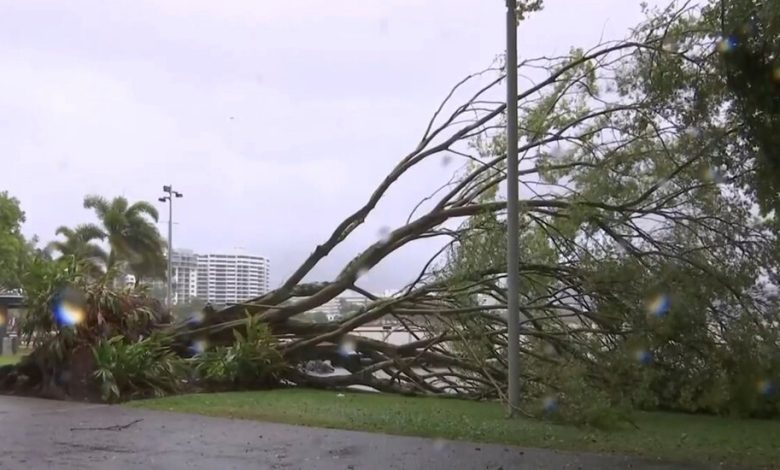Australia’s First Cyclone of Season Nears Amid Rash of Extreme Weather

A tropical cyclone is bearing down on northeastern Australia, the first of the season and part of a stretch of extreme weather Australia has experienced over the past few days, including heat waves, floods and wildfires.
Tropical Cyclone Jasper is expected to make landfall as a Category 2near the city of Cairns (population: 170,000) in Queensland on Wednesday afternoon, local time, bringing destructive winds of up to 87 miles per hour. Over 8,000 homes are without power and 93 people have evacuated.
The country’s meteorological authority said that a tropical cyclone arriving so early in the season in an El Niño year, which is characterized by hot and dry conditions, is unusual.
“Seeing a tropical cyclone develop in December during an El Niño year is quite rare,” Laura Boekel, a senior meteorologist with the Bureau of Meteorology, said at a news conference on Wednesday. “In fact we’ve not had one on the record since the records began in the 70s.”
Australia’s tropical cyclone seasons usually run from November to April in the country’s north, but in El Niño years, the season doesn’t usually start until January or February, she added.
Australia is heading into its worst fire season since the deadly Black Summer of 2019 to 2020, when an estimated 480 people died from direct fire exposure or smoke inhalation. The past few months have been riddled with unpredictable extreme weather. A record-breaking dry September and dry October was followed by a wetter-than-average November.
Last weekend, the country experienced fires, heat waves and floods.
Sydney, Australia’s biggest city, sweltered through a heat wave, with temperatures reaching 111 degrees on Saturday. In Western Australia, firefighters struggled to contain a raging wildfire that was sparked during extreme heat and high winds on Sunday.
Meanwhile, parts of South Australia received the heaviest December rain on record on Sunday. Storms brought more than 20,000 lightning bolts and left 30,000 properties without power. Parts of Victoria also experienced heavy rain and flash flooding on the same day.




